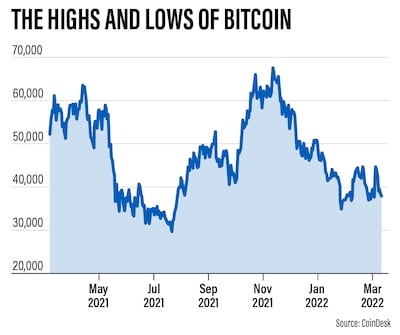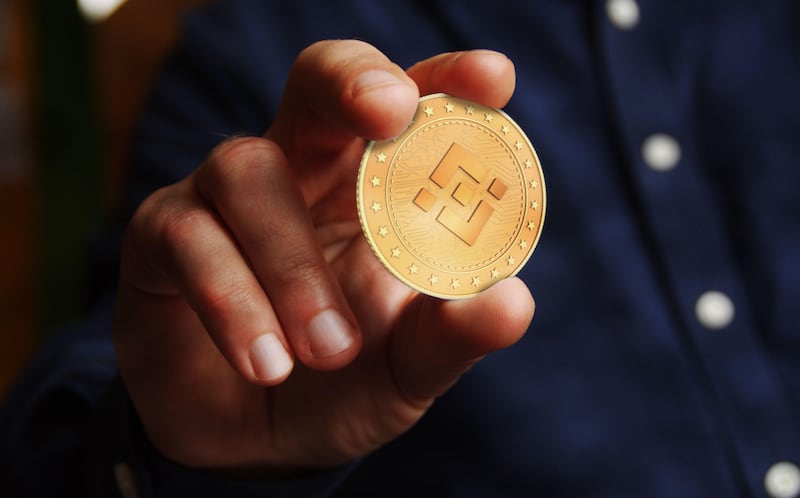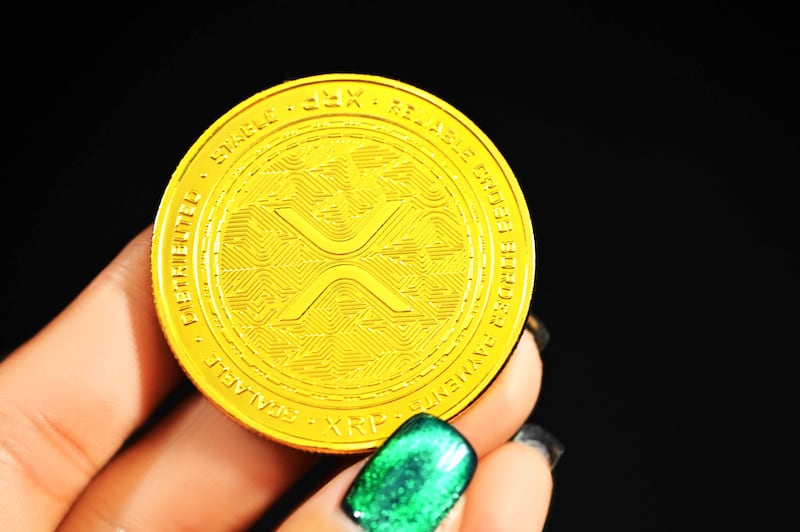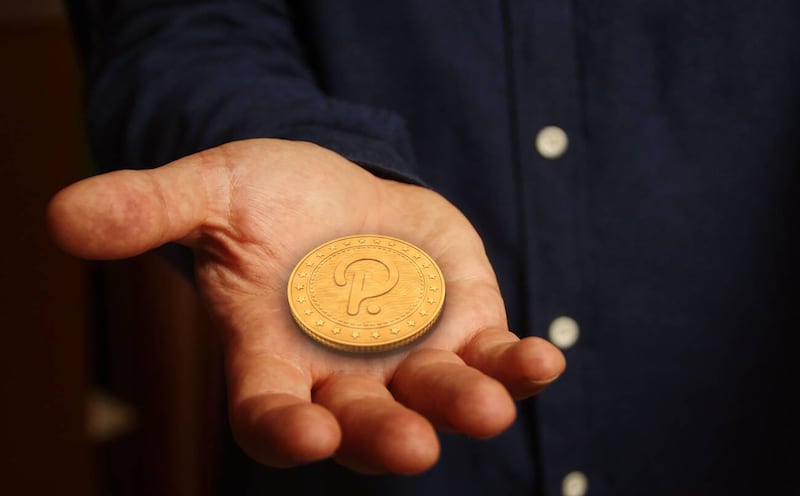RELATED: A beginner's guide to building a cryptocurrency portfolio
In the summer of 2018, I sat on my bed in south-west London and held a piece of paper with the date, my name and my signature next to my face so that I could take a picture with my webcam.
This was just part of the process for signing up to buy cryptocurrency then, which also involved a woman calling me by video to verify I was the person in the picture and that the details all matched my passport.
Only then was I allowed to create an account, deposit money and buy Bitcoin. From this platform I could then transfer it to another exchange where I could use that Bitcoin to purchase what are known as alt-coins.
What happened to the Bitcoin price, is it the end of the crypto boom?

Alt-coins are as numerous as they are varied. Some you may have heard about have exceptional teams behind them, solving real world problems and aiming to make it into the big leagues.
Others were started as jokes, such as Dogecoin and Shiba Inu, or get rich quick schemes and serve only to make a buck when they increase in value. When the music stops, these are not the coins you want to be holding.
We have come a long way from the days of such thorough and intrusive verification.
These days, just an Emirates ID number is enough to get you started on platforms such as FTX.com, and you can begin depositing money straight from your debit card, although this method comes with big fees.
Over this time, my cryptocurrency journey has led me through quite a few stages, a few of which I will describe here.
Crypto winter
Shortly after buying into Bitcoin, when it was priced about $6,400, we entered what those in the game call the “crypto winter”. This is when all coins, including Bitcoin, took a dive and stayed there for months. The price halved and until the spring of the following year it did not budge.
Jokes rolled endlessly about how Bitcoin would “go to zero”, that it and all other cryptocurrencies were useless. I remember American comedian and political commentator Hasan Minaj mocking viewers who had invested with the taunt, “Bitcoin is at $3,000!”
Needless to say, I held on for dear life, or HODL, as they say in crypto-land. Selling then would have resulted in some loss, but in my head there was an awful lot more to gain by staying the course.
To me, Bitcoin was a pioneer. It was the original gangster of digital currency. Even if it turned out to be terrible, it would still have been first and there is value in that. In my head, it was like owning gold and there was a limited supply.
Fortunately, I am not an emotional investor and I weathered the crypto winter fairly painlessly.

Moons and dumps
Since then, Bitcoin has both “mooned” — surged in price — and “dumped”, which is when a mass sell-off causes the price to tank. Neither of these is a particular concern. Rallies are exciting and a time to take profit should you wish to do so.
A lot of fear comes at times of market correction, after we have hit resistance and head back down to see where the level of support is. It is often at this price that the whales, or the big players with deep pockets, will buy in. Whales love a discount and have the funds — and constitutions — to bet big in anticipation of a rally.
There are various graphs and charts you can use to try to see where Bitcoin currently sits on a scale from dirt cheap to serious bubble.
Of course, these charts are an exercise in mathematical modelling by investors who specialise in that area and are not a guarantee of sound financial advice.
As I write this, that support price is being tested. There is a lot of fear in the market, which our favourite crypto-loathing investor likes to say is the time to be greedy. At this point, I am happy to be seeing the support price moving higher each time we test it.
Bitcoin scalping
Not too long ago, I looked into other ways of making money through cryptocurrency. It was always going up and down, far more than any other asset, and that volatility was enticing.
Scalping is a technique where you place a small leveraged trade and sell when the price moves a percentage point or two in your desired direction. You then put in your stop-loss (the price you will sell to mitigate your loss) to avoid being liquidated if the price moves too far in the opposite direction.
Leverage is when you borrow money to make more profit and is incredibly risky. It should only be used by experienced traders.
Scalping trades last a few minutes to a few hours and the point is to be in and out as quickly as possible.
At this point, I will warn you that scalping is incredibly difficult. Most people don’t even profit from it in their first year. The different kinds of technical analysis all focus on various indicators and triggers, such as a short-term moving average line crossing above a long-term moving average line. These indicators would guide your decision for your next trade.
Professionals advise you to keep a trading journal to log not only which indicators you used and with what success, but also what emotional and mental state you were in at the time. It is often said that emotions have no useful place when it comes to trading.
After watching hours of YouTube videos and experimenting with weeks of paper trading, placing the trades but without actual money involved, I realised this was not the route for me. Scalping needs a lot of time and attention and, as expected, a full-time job and a two-year-old child left me with little of either.

Trading bots
And so we arrive at the latest station on my cryptocurrency journey.
Annoyed at missing the best rallies while I was asleep, I lay searching on my phone for alternative ways to make the most of this market volatility.
That is when I came across trading bots. It sounds cool to think of them as tiny robots doing your bidding, but really it is software that places trades for you, depending on the parameters you set. It then sells once it goes up by however many percentage points you designate.
In 2022, this software is easily accessible and you need no knowledge of writing code, just an understanding of what you want the bots to do.
I use a subscription service called 3Commas, which I link to an exchange and that is about as complicated as the set-up gets. Knowing what to tell your bots to do is a little trickier.
Parameters need to specify a number of things, including which alt-coin to trade. It is important to choose a coin with high volume and good volatility. It is also important not to buy in at the tail end of a rally, as the price will soon begin to fall again.
The strength of trading bots are safety orders: further trades on the same coin, made if the price falls. This lowers your average buy-in price and means that it does not need to go as high to reach your take profit percentage.
Then you have a few other details to enter before you can start your bot, including whether you take your profit in dollars or the coin you are trading.
There is a bit of jargon to learn, such as “TP’ing”, or when you take profit, and holding a red bag, which is when you have filled all your safety orders and simply need to sit and wait for the price to recover enough to hit your TP price.
If you are feeling overwhelmed, the good news is there have been thousands of other people in the same position, and a few wise users among them are guiding the way for newcomers.
I watched a YouTube series from start to finish and joined the associated Discord channel. There was a wealth of information, easily and simply explained.
One of the benefits of the cryptocurrency world is that it operates 24/7, and so do my bots. Each one might only earn 10c a trade, but the point is that with enough of them running 365 days a year, it might make for a nice little side income.
So while I HODL my Bitcoin, waiting patiently/optimistically for the day the price hits seven figures, I am enjoying the endorphin hit that comes with every “trade completed” push notification that pops up on my phone.
Of course, my cryptocurrency journey and the story of it is not financial advice, and it is paramount to do your own research and only invest money you can afford to lose. As mentioned many times here, cryptocurrency is a volatile market.
But it is that volatility on which trading bots thrive.
10 handy tips when using trading bots for cryptocurrencies:
- Only invest money you can afford to lose
- Learn about crypto currency in general and how the market moves
- Do as much research as you can, there are numerous articles and videos available online with valuable information
- Remember, nothing you read or see online is financial advice
- Start small. You will learn a lot with just one or two bots. It is best to make mistakes on a couple of bots than dozens of them
- If you want to start bigger, do it with paper trading (not real money)
- Join a community. There are people out there who were in your place not long ago and willing to help
- Be careful to manage your risk. It is easy to have more bots than your finances can support
- Watch out for fees. These can be minimised using certain methods
- Keep security and privacy in the forefront of your mind, using two factor authentication and strong passwords where possible
















